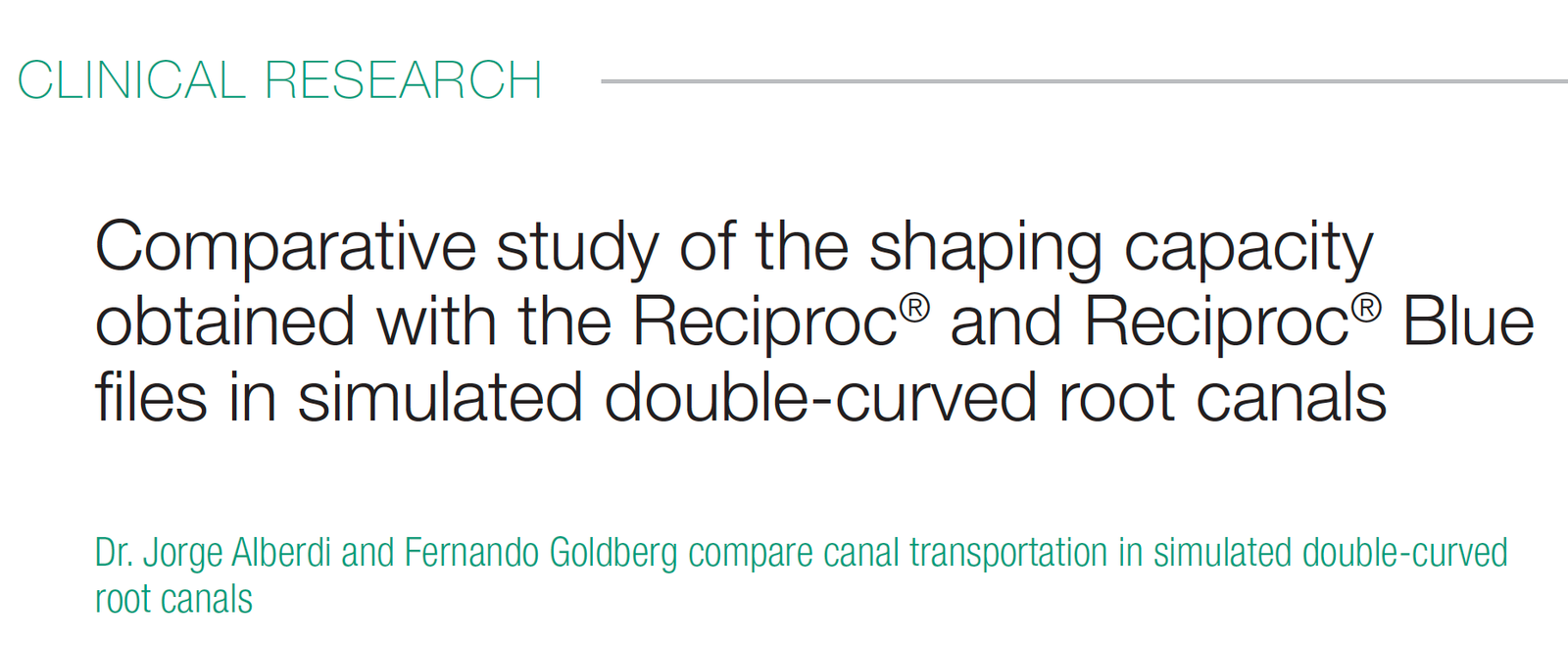ABSTRACT
Objective. To compare canal transportation in simulated double-curved root canals afterinstrumentation with the Reciproc® R25 and Reciproc® Blue R25 files.
Materials and methods. Thirty Endo Training Block-S models were dyed with black India ink and photographed. The resin blocks were randomly divided into two groups: A and B (n = 15). The canals were instrumented with the Reciproc R25 (Group A) and Reciproc Blue R25 (Group B) systems. After instrumentation, the canals were dyed again and photographed under the same conditions. The pre-instrumentation images were superimposed on the post-instrumentation images. A measurement template, divided into 16 equal cells of 1 mm, was placed on each instrumentation in each canal of the 30 blocks. The visual evaluation was conducted in cells 1 to 10 according to the following categorization: 0 = centered and 1 = transported. Apical transportation was evaluated for each group. The position of the foramen after instrumentation was classified into three categories: 0 = centered, 1 = transported, and 2 = perforated. Groups were compared for the variable “modification” within each cell by the chi-squared test or Fisher’s exact test, as appropriate, and for the variable “foramen” by the chi-squared test. In all cases, the level of significance was P < 0.05.
Results. The differences between groups were significant at 1 mm, 5 mm, and 6 mm but not significant at 2 mm, 3 mm, 4 mm, 7 mm, 8 mm, 9 mm, or 10 mm. With regard to apical transportation, the difference between groups was significant (P < 0.001).
Conclusion. Compared with the Reciproc R25 file, the Reciproc Blue R25 file produced a more centered canal that more accurately represented the original anatomy of the simulated double-curved root canal.
Jorge Alberdi, Fernando Goldberg

